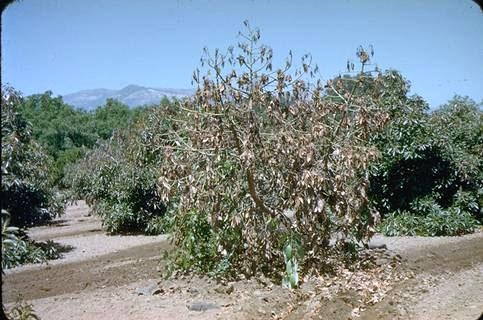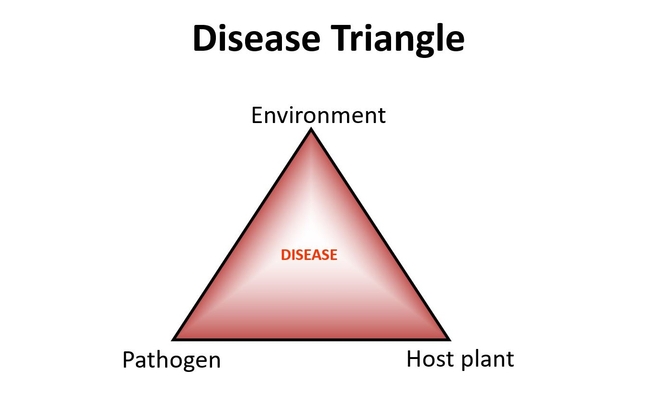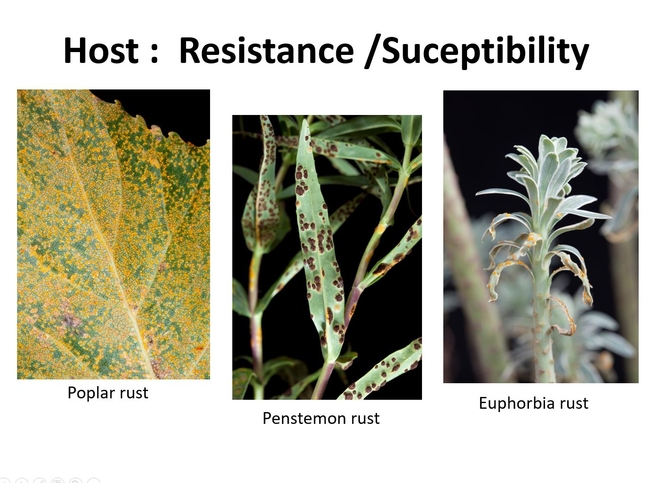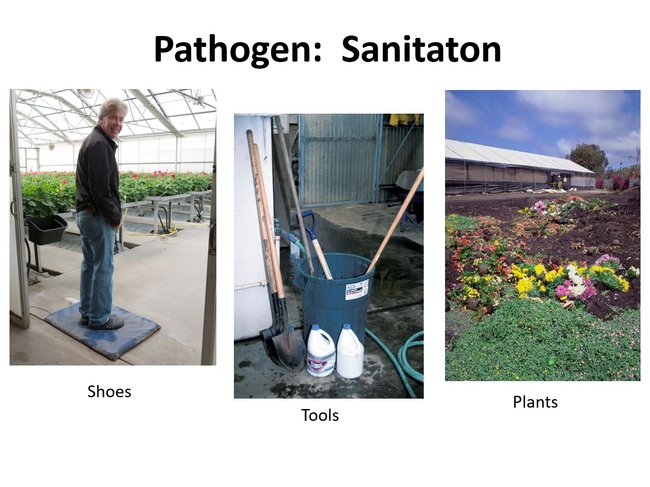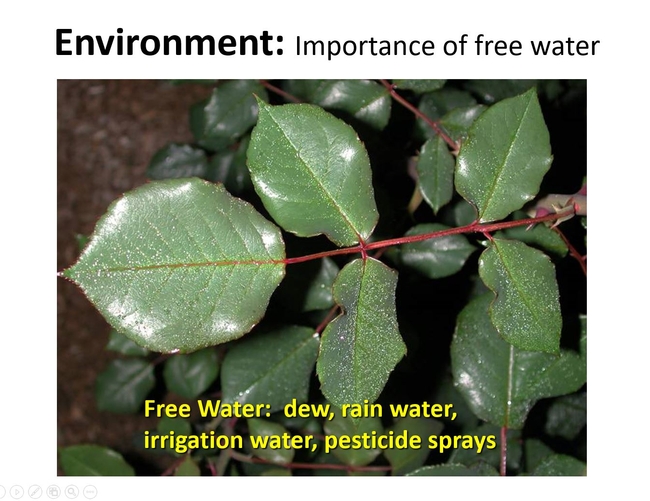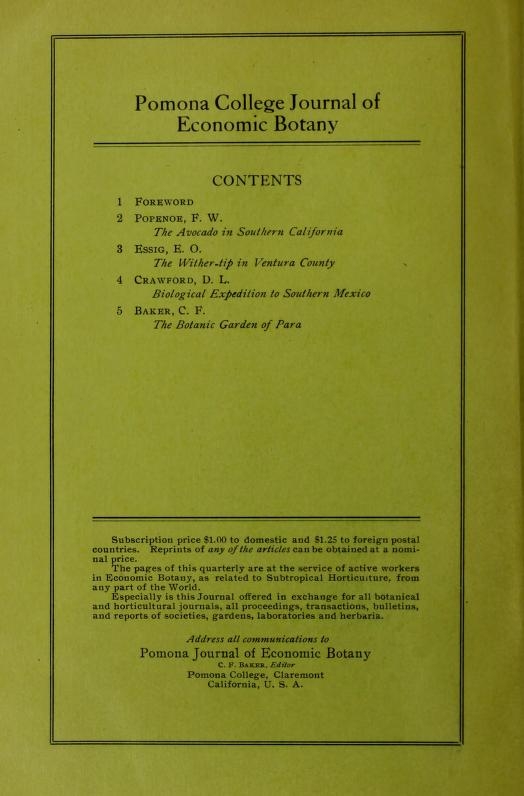- Author: Steven A. Tjosvold
Plant diseases– their occurrence and severity– result from the impact of three factors: the host plant, the pathogen, and the environmental conditions. This is represented with the disease triangle.
If any one of the three factors is missing, the triangle is not complete, no disease will occur. Simply, plant disease will not occur if there is no viable pathogen, or no susceptible host plant, or the environmental conditions are not favorable. The severity of disease depends on the favorable level of each factor. How susceptible is the plant? How virulent is the pathogen? How conducive are the existing environmental conditions in supporting disease and pathogen spread?
The triangle also helps illustrate that the 3 factors are interacting with each other. The clearest example of this is how the environment factor interacts with the pathogen and host factors. Previous blogs illustrate the importance of leaf wetness on pathogen infection and disease severity. Long durations of free water on a susceptible plant can increase pathogen infection and disease severity. At the same time, the low- sunlight conditions, when these wet periods could occur (e.g. winter), could also be stressful to the plant, and the plant is less likely to mount defensive reactions to fend off infection.
Learn about the biology for any disease you are managing. Consider the disease triangle and the three interacting factors, and how management practices might help weaken or break the triangle's bond. For example, could you grow non-susceptible plant varieties or species? Could you eliminate the pathogen through judicious sanitation practices? Could you manage leaf wetness and relative humidity to create unfavorable environmental conditions for disease?
Could you grow non-susceptible plant varieties or species?
Although these three plant hosts all have rust diseases, each host is infected with a unique plant pathogen that attacks its specific host. In managing these diseases, a strategy of host resistance might be employed, where crops of non-susceptible hosts are rotated into the infested area. Conceivably these three hosts could be rotated.
Could you eliminate the pathogen through judicious sanitation practices?
Sanitation is a key management practice that employs the strategy of eliminating the pathogen from the growing area. Here, sanitizing shoes before entering the greenhouse. Cleaning soil from tools and sanitizing them before use. Properly covering and disposing of rogued plants or cut flowers (not shown here!).
Could you manage leaf wetness and relative humidity to create unfavorable environmental conditions for disease?
AND Then, can you add the 4th factor for Disease? That of TIME. It takes a certain amount of time for a given disease to show up. Some strike rapidly and others are chronic and persistent. Different time frames allow for different urgency for treatment. It's always best to remove one of the three Triangle factors before dealing with the Disease Pyramid which includes Time:
https://ucanr.edu/blogs/blogcore/postdetail.cfm?postnum=19842
The Disease Quadrangle
https://ucanr.edu/blogs/blogcore/postdetail.cfm?postnum=28845
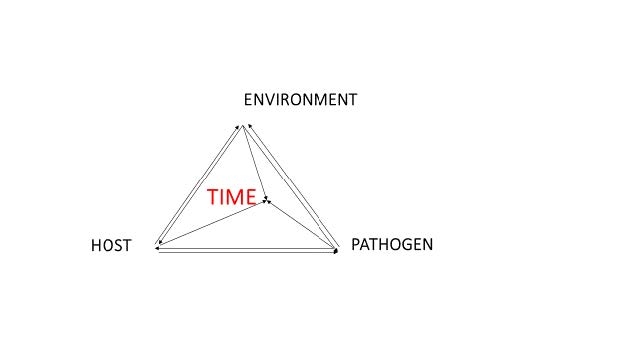
- Author: Ben Faber
UC Ag Expert talks about avocado diseases
Following the recent webinar on Citrus Thrips presented by Beth Grafton-Cardwell, a second webinar on Avocado Diseases will be offered in November. Check out the Thrips webinar and if interested enroll in the avocado one.
https://ucanr.edu/sites/ucexpertstalk/Past_Webinars/
or on YouTube
Date: November 14, 2018
Time: 3:00 PM - 4:00 PM
Contact: Petr Kosina pkosina@ucanr.edu
Sponsor: UC Ag Experts Talk
Location: Webinar
Event Details
Register in advance for this webinar:
https://ucanr.zoom.us/webinar/register/WN__Bj1TCaVSHG6RKg3-ASXuw
Ben Faber, UCCE Ventura Farm Advisor, will talk about avocado diseases. He will cover the identification and biology of root rot, crown rot, bacterial canker, leaf/stem blight, black streak and sun blotch. Then he will discuss the management management practices to prevent these diseases and the chemicals available to treat them. Resistance management tactics will be discussed.
Event Reminder
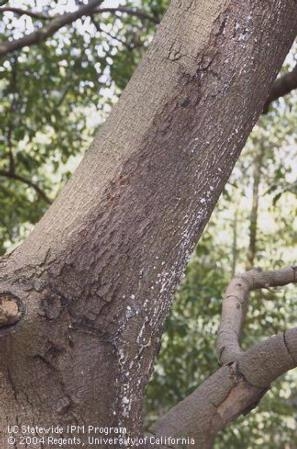
- Author: Ben Faber
In 1911, the avocado was a relatively new crop in Southern California and the great USDA plant explorer Wilson Popenoe (pronounced POP e Noe according to Jack Shepherd), describes avocado culture and its problems
https://www.biodiversitylibrary.org/item/137628#page/31/mode/thumb
This is from the first volume ever of the Pomona Journal of Economic Botany which also has a nice description of "wither tip" of citrus in Santa Paula.
https://www.biodiversitylibrary.org/item/137628#page/5/mode/1up
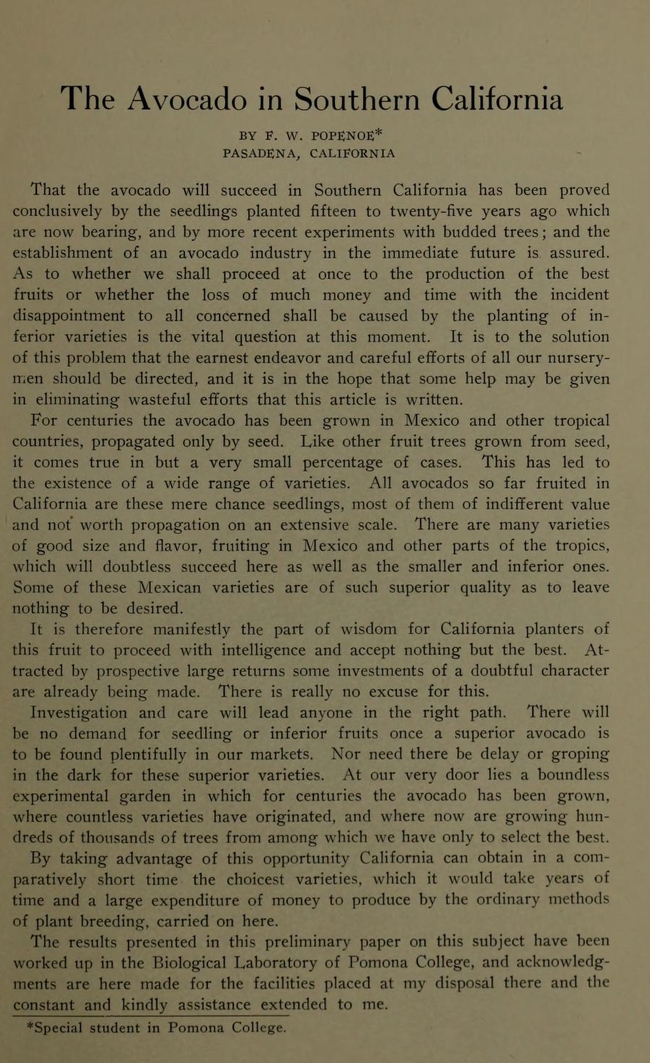
- Author: Beth Grafton-Cardwell
What Are the Ag Experts Talking About?
| Event Name | Date |
|---|---|
| UC Ag Expert talks about citrus thrips | 10/17/2018 |
What is involved in the webinars?
A series of 1 hour webinars will highlight various pest management and horticultural topics for citrus and avocados. During each session, a UC Expert on the subject will make a presentation and entertain write-in questions via chat during and/or after the presentation. As we develop this program, we may expand to other crops. These programs are open to all, but are geared to those individuals, such as PCAs and Growers who need CEUs.
Topics: pests and diseases of citrus and avocados
What are the topics and how do I register?
Citrus Thrips - October 17, 2018 at 3 pm
Register in advance for this webinar by clicking on the event link above.
Are there Continuing Education units?
When the subject discusses pest or disease management, continuing education units will be requested from DPR (1 unit per session). Participants will pre-register, participate in the webinar and be awarded the unit. The sessions will be recorded and hosted on this web site for future study. However, continuing education units will be awarded only to the participants who attend the live version of the webinar.
Who is involved?
This webinar series is brought to you by Ben Faber (UC ANR Ventura Advisor) and Dr. Beth Grafton-Cardwell (Depart of Entomology UC Riverside Extension Specialist) with the technical support of Petr Kosina (UC IPM Contect Development Supervisor) and Cheryl Reynolds (UC IPM Interactive Learning Developer).
https://ucanr.edu/sites/ucexpertstalk/
Photo: The mighty citrusthrips - Scirtothrips citri
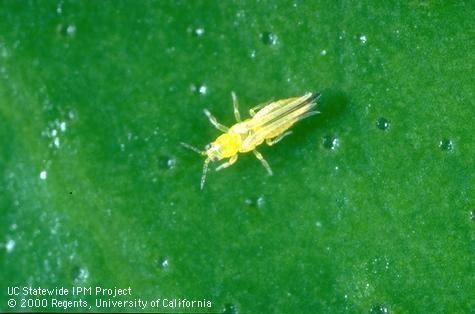
- Author: Ben Faber
It's that time of year to see some drama in avocado orchards. Once healthy-looking trees can suddenly turn brown in a weekend and all the surrounding trees still look fine. And it can be quite common in some years along the coast. The winter weather will have mild, cool even rainy days and then suddenly there's one of those 97 deg days and the tree goes down,
The entire tree or only one or several branches wilt suddenly when affected by Verticillium wilt. Leaves turn brown and die, but the dead leaves usually remain on the tree for several months. Brown to gray-brown streaks are visible in the xylem of the branches or roots when the bark is removed. Sometimes the streaking is visible in the branches, but often it is found at the base of the trunk.
Trees with Verticillium wilt often send out new, vigorous shoots within a few months after the initial wilting. If well cared for, affected trees often recover completely with no reoccurrence of the disease. However, not all trees survive an infection and disease symptoms sometimes reoccur after an apparent recovery.
The fungal pathogen Verticillium dahliae infects many hosts, including various berry and flower crops, cotton, eggplant, olive, pepper, stone fruit trees, strawberry, and tomato. Verticillium wilt is present throughout the state but is less common in avocado than root rot and canker diseases. Verticillium dahliae persists for years as microsclerotia in soil. Microsclerotia spread in infested organic matter and soil that is moved. The fungus infects through feeder roots, and then moves up in the water-conducting xylem system, restricting or preventing water movement to foliage from the roots.
No known methods are effective in curing infected trees. Trees often recover completely and display no further symptoms, even though they are still infected. After dieback ceases and new growth begins, prune off dead branches. Provide optimal irrigation and modest fertilization to promote new growth. If a tree dies from Verticillium, remove it. But give it a chance, there's a good chance it will recover.
In areas where V. dahliae is known to occur, plant Mexican rootstocks instead of the more Verticillium-susceptible Guatemalan rootstocks. Do not plant avocado on land where crops susceptible to Verticillium wilt have previously grown. Do not interplant avocado with other hosts of Verticillium, which are listed in publications such as Plants Resistant or Susceptible to Verticillium Wilt (PDF). Even if they have recovered, do not use trees infected with Verticillium wilt as a source of budwood or seed.
